 Want to promote your small business on a budget?
Want to promote your small business on a budget?
Have you considered partnering with less famous influencers?
Highly targeted micro-influencers can help your small business gain visibility, engage an audience, and promote your products.
In this article, you'll discover how to find and connect with micro-influencers who can promote your small business.
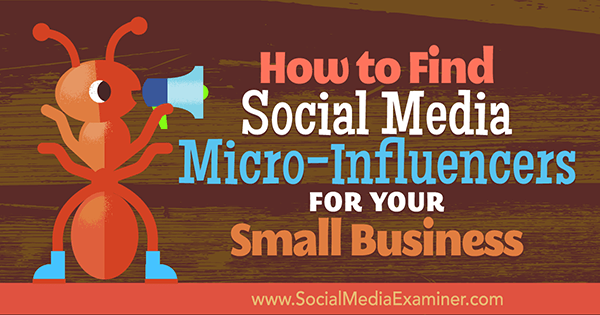
#1: Find Micro-influencers Among Your Fans
If you look through your social media followers, chances are you'll find micro-influencers who are already interested in your business or brand. Promoting your business through micro-influential fans can be much more effective for these reasons:
- It will take less effort to convince them to work with you.
- Your partnership will be more authentic.
If you approach influencers who have never heard of your business, it will take some time and effort to win them over. They might be hesitant to partner with a business they're not familiar with and might even reject the proposal altogether.
When you approach influencers who are already fans of your business, however, you won't have to waste your breath selling your business to them. They already know and trust you. Many of them might even jump at the opportunity.
To find micro-influential fans from your existing followers, go to your Instagram profile and display all of the followers you have. Here, we'll use Grange Restaurant & Bar in Sacramento as an example.
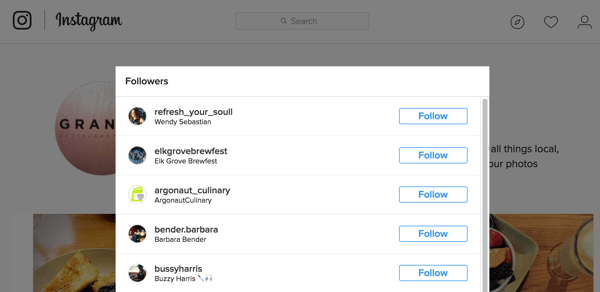
Now go through your list of followers and check out the profiles of users who intrigue you. The goal is to find people who have somewhere between 1,000 and 100,000 followers.
Let's take a look at one of the restaurant's followers: @boozehoundcc. The username is intriguing and relevant because it relates to alcohol, which is part of Grange's business.

If you check out this user's profile, you'll see that he's a bartender with more than 7,000 followers, which means he has significant reach. If you go through his posts, you can see that he regularly posts images of food and drinks from different bars and restaurants. This is a sign that he might be interested in partnering with the restaurant and promoting their menu items.
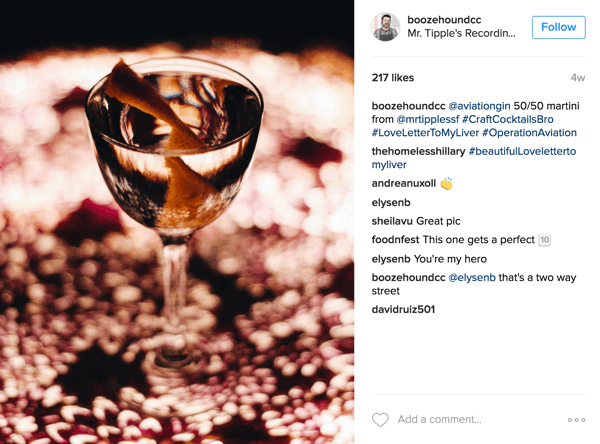
To engage with this micro-influencer, Grange could offer him free meals and discounts. In return, he would post images of his experience at their establishment. Note that you can also use this technique on Twitter.
#2: Research Hashtags to Find Influential Users
Some micro-influencers may have never heard of your business, but that doesn't mean they won't be interested in your products or services. Hashtag research can help you identify influential users who are already interested in products or services similar to what you offer.
Get World-Class Marketing Training — All Year Long!
Are you facing doubt, uncertainty, or overwhelm? The Social Media Marketing Society can help.
Each month, you’ll receive training from trusted marketing experts, covering everything from AI to organic social marketing. When you join, you’ll also get immediate access to:
- A library of 100+ marketing trainings
- A community of like-minded marketers
- Monthly online community meetups
- Relevant news and trends updates
These influencers are more likely to be interested in a partnership with your business. They're also more likely to reach the right audience, making your campaign more effective.
When you choose a hashtag to research, make sure it's specific, not generic. For example, if you're marketing organic food products or organic meals, #organicfood is a much more effective hashtag to research than simply #food.
After you pick a relevant hashtag, search for it on Google. You'll get results from both Instagram and Twitter. You can conduct your research on either of these platforms, but Instagram is preferable because the results are simpler.
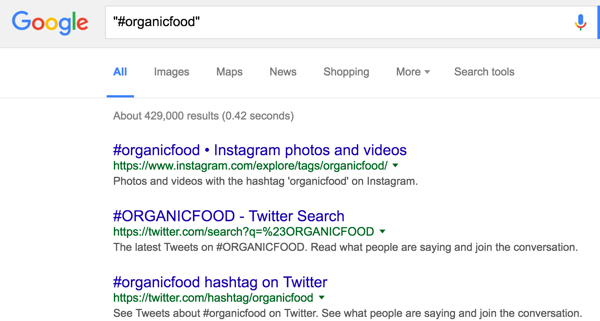
If you check out the Instagram results, you'll get a list of top photos using the hashtag #organicfood. The top posts are usually the ones with the most likes. So choose any one of them and see who posted the image. The idea is to find out if that user would make an ideal micro-influencer for your business.
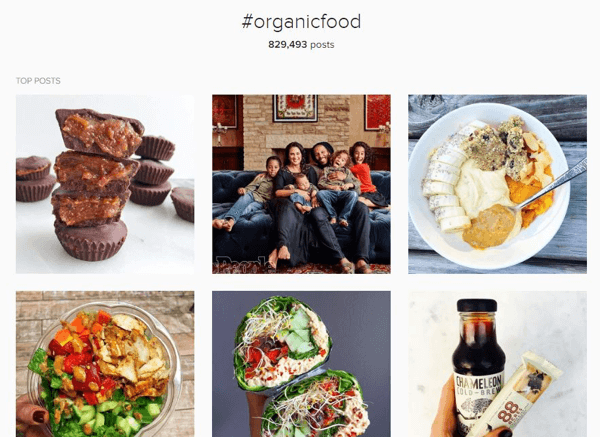
Some of these posts may be from top influencers and some may be from micro-influencers. All you have to do is click on them and check out the users. Find out how many followers they have and what kind of posts they usually publish.
For example, let's check out one of the posts showing up in the results. As you can see in the screenshot below, the post has more than 1,900 likes and plenty of comments.
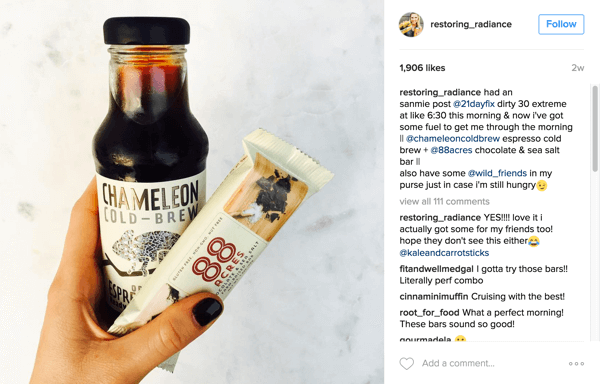
The post was made by @restoring_radiance, so the next step is to check out the user's profile. You can see that this user has 65.8k followers, a highly impressive number. The user has massive reach and still falls within the micro-influencer category. Judging from the user's bio and other posts, it's clear that she is an ideal partner for businesses that sell healthy organic foods.
For an organic food business, you could engage with this influencer by sending some freebies and gift baskets of your products. The user would then review your product and promote it through her profile. She could also show her followers how to use your products to prepare certain meals.

Discover Proven Marketing Strategies and Tips
Want to go even deeper with your marketing? Check out the Social Media Marketing Podcast! Publishing weekly since 2012, the Social Media Marketing Podcast helps you navigate the constantly changing marketing jungle, with expert interviews from marketing pros.
But don’t let the name fool you. This show is about a lot more than just social media marketing. With over 600 episodes and millions of downloads each year, this show has been a trusted source for marketers for well over a decade.
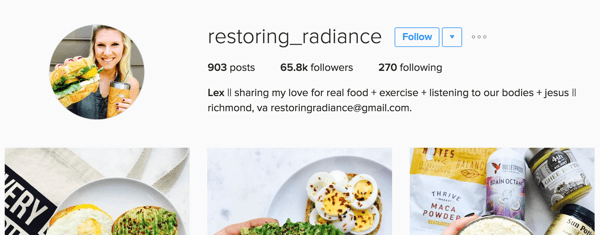
If you run a restaurant serving healthy meals, you could invite the influencer for a special dinner or an event. The influencer would then showcase her experience at your restaurant and promote it to her followers.
When you market your business through influencers who are relevant for your business, there's a higher chance you'll be able to reach your target audience.
#3: Do a Google Search for Local Bloggers
If your small business serves a specific geographic area, searching for bloggers in your vicinity can help you find relevant micro-influencers. Local bloggers often engage readers from a specific area. They have significant readership and can be classified as micro-influencers.
To do a Google search for bloggers in your area, use the term “bloggers” and your city/neighborhood name. For example, searching for “bloggers in bay area” turns up results for articles and lists that mention top bloggers in that area.
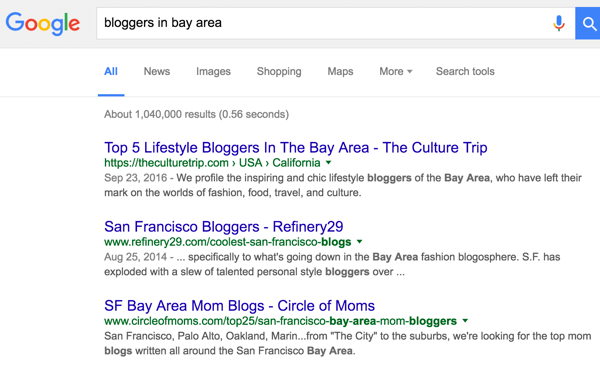
For a more relevant search, add a keyword related to your business. If you're a restaurant or a food-related business, for example, search for “food blogs in bay area” to find local bloggers who write about topics related to your business.
Go through these articles and check out the blogs mentioned in the list. You should be able to find popular local bloggers who can help you engage with your target audience. Look through their blogs and see if their content matches what you're looking for. You can then reach out to them and engage them for a partnership.
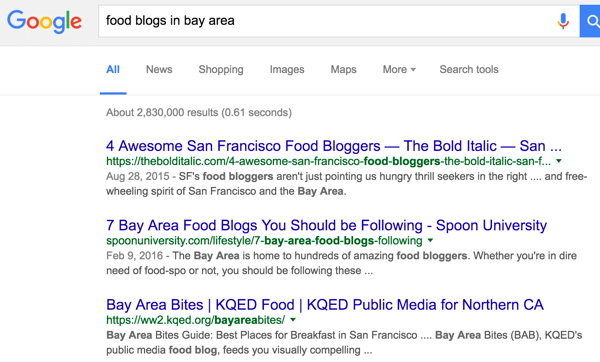
If your business serves only certain geographic areas, working with micro-influencers from a different city won't be helpful because their audiences will likely be located in cities you don't serve. So your efforts would be wasted.
But when you reach out to micro-influencers and bloggers in geographic areas where you do business, you should be able to engage an audience in your target locations. This makes for a much more effective campaign than simply targeting any micro-influencer you can find.
#4: Use Third-party Tools to Find People in Your Niche
Manually looking through different user profiles on social media can be time-consuming and may not provide you with essential stats like retweet and reply ratios. You'll be relying on observation alone, which can be unreliable at times.
Using influencer research tools like BuzzSumo, Klear, and Ninja Outreach makes it easier to find micro-influencers to engage with. You'll get accurate results while freeing up valuable time to work on other aspects of your marketing.
BuzzSumo lets you search for influencers using specific keywords. In the search results, you can easily view the stats of each influencer. The number of followers gives you an idea of the influencer's reach, and the retweet and reply ratios inform you about his or her engagement rate. On the Twitter Influencers tab, enter your keyword (“gaming”, for example) and click Search.
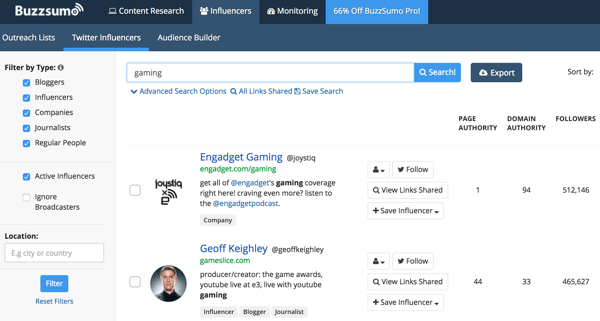
To find micro-influencers from this list, filter the influencers by type, and look for only Regular People.
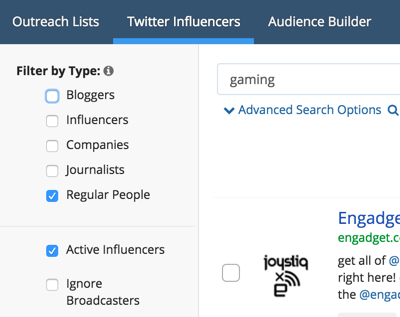
The filtered list will display influencers with several thousand followers on Twitter who are relevant to the keyword, as shown below. You can filter the results further and look for journalists or bloggers in your niche.
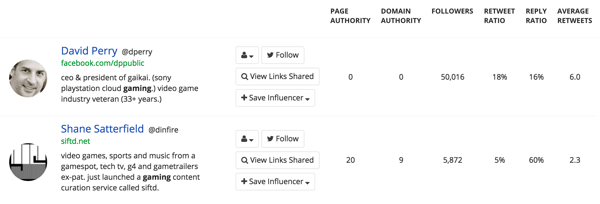
BuzzSumo also lets you sort the results according to what you're looking for. For example, if you're focusing mainly on reach, sort the results based on the number of followers the influencer has. Or if you're focusing on engagement, sort based on retweet and reply ratios.
To get a good mix of both reach and engagement, sort the results based on page authority. There's a good chance users with a high page authority are seen as experts in their niche. They have significant followings with decent retweet and reply ratios, making them the perfect choice of micro-influencers for small businesses.
In the results below, you can see a list of influential regular people relevant to the search for “gaming”. The results have been sorted based on page authority. The top users on the list typically will have several thousand followers and a decent reply ratio.
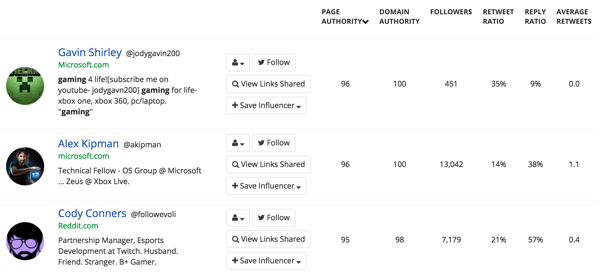
Once you compile a list of potential micro-influencers, check out their profiles and determine whether they're well suited to promote your business. If so, reach out to them and propose a partnership.
The other third-party tools mentioned earlier (Klear and Ninja Outreach) will also help you find relevant micro-influencers for your small business.
Conclusion
The best part about micro-influencer campaigns is that you'll be spending a lot less on them compared to top influencers, as 84% of them charge less than $250 for one branded post on Instagram. These benefits make micro-influencers ideal for small businesses and startups.
The tips above should help you find some of the best micro-influencers to partner with. You can thoroughly research the most relevant influencers with significant followings to raise awareness about your business. These influencers will also help you engage more effectively with your target audience while you cut down on your marketing costs.
What do you think? Have you partnered with a micro-influencer to promote your business? What were the results? Please share your thoughts in the comments below.
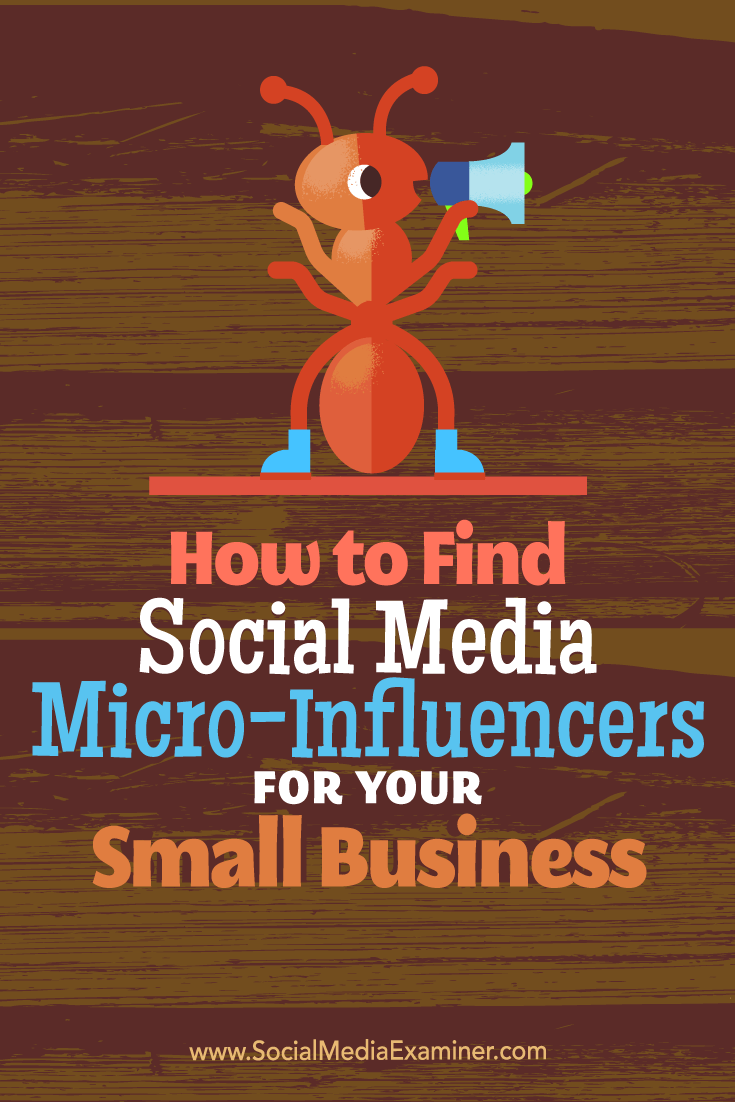
Attention Agency Owners, Brand Marketers, and Consultants

Introducing the Marketing Agency Show–our newest podcast designed to explore the struggles of agency marketers.
Join show host and agency owner, Brooke Sellas, as she interviews agency marketers and digs deep into their biggest challenges. Explore topics like navigating rough economic times, leveraging AI, service diversification, client acquisition, and much more.
Just pull up your favorite podcast app, search for Marketing Agency Show and start listening. Or click the button below for more information.

